Learn

The Orchestra
The modern orchestra started to take shape during the Renaissance. Before this time, non-piano music wasn't composed for specific instruments. Composers meant for their music to be performed by whatever instruments were available.
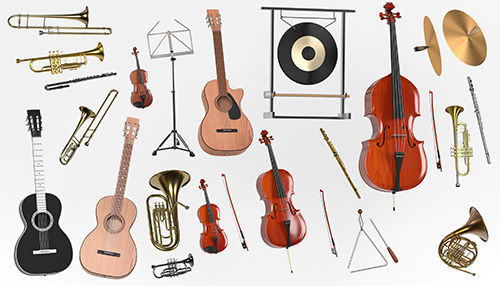
However, during the Renaissance, a composer by the name of Claudio Monteverdi specifically wrote for particular instrument combinations. He knew what sounds he wanted to hear when his music was performed. Listen to an example of Monteverdi's work, "Deus in Adiutorium" (2:14).
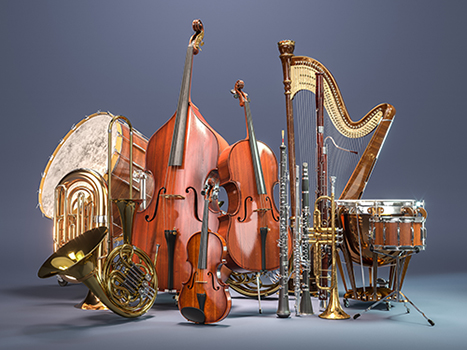

Instrument Families
When people talk about instruments, they are often referred to as families. That is because, just like human families, the instruments share some common characteristics of other members of the family. These can relate to the way an instrument is played, the sound it makes, and the construction or material(s) it is made from.
The modern orchestra has four instrument families:
- String instruments
- Woodwind instruments
- Brass instruments
- Percussion instruments
Sometimes vocalists are included as the fifth family.

The String Family
The string instrument family consists of the four different instruments in the orchestra based on sizes. The violin is the smallest. Next is the viola. Both of these instruments are held under the chin while they are played.


The cello is the next-to-largest string instrument. It is played sitting down as it gently rest against the cellist's chest and is balanced between the knees with the bottom (called an endpin) placed on the floor.
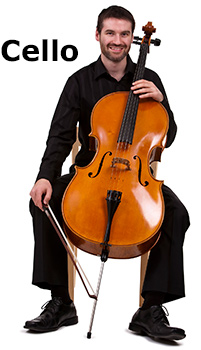
The double bass is the largest string instrument. It is played standing as it rests against the player's body with the bottom (endpin) placed on the floor.
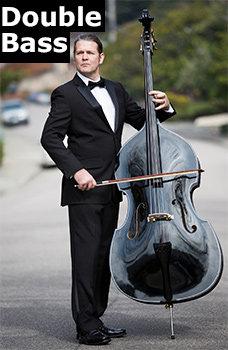
The string instruments are usually played by drawing a bow across the strings. A bow is a stick that is strung with horse hair and pulled across the strings of a string instrument to create sound.

Sometimes, performers will use their fingers to pluck the strings. Occasionally, performers will make a sound by drawing the wooden side of the bow across the strings.

Vancouver Symphony Orchestra (string section) with conductor Bramwell Tovey. Image by Vancouver 125 is licensed under CC BY 2.0.
Watch the video FM Symphony Orchestra Young People's Concert: Introduction to the String Family (2:10), which showcases the string family in action.
Open FM Symphony Orchestra Young People's Concert: Introduction to the String Family in a new tab

The Woodwind Family
The woodwind family earned their family name because they all used to be made from wood. Today they are made from various materials like wood, metal, plastic, or a combination of those. Musicians make sounds on these instruments by blowing air through the mouthpiece (that's where the wind in woodwind comes from) and opening and closing keys with their fingers.
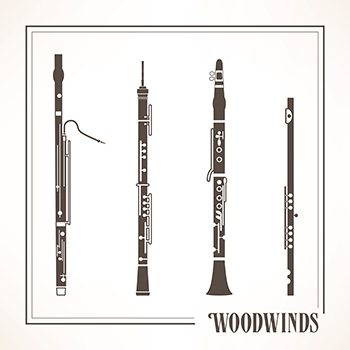
Woodwind instruments in an orchestra
The mouthpieces for some woodwind instruments use a thin piece of wood called the reed that vibrates when a performer blows into the mouthpiece. Instruments that use a reed are the clarinet, oboe, and bassoon.
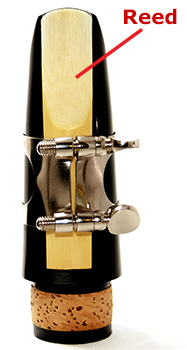
A reed on the mouthpiece of a clarinet.
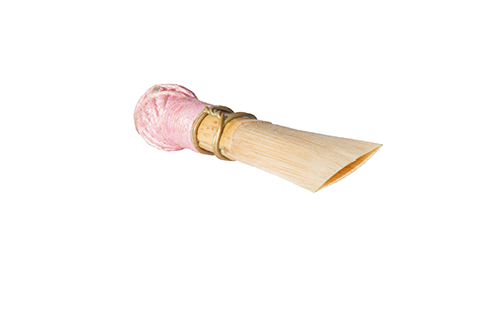
The oboe and bassoon mouthpiece
A flute mouthpiece is called a head joint. It is where the sound of the flute originates as the player blows air into the flute through the embouchure hole (also known as the blow hole or mouth hole). The embouchure hole is in the center of the lip plate (or embouchure plate) that anchors the lips to the flute.

Flute mouthpiece
The instruments in the woodwind family include:
- Flute
- Oboe
- Clarinet
- Bassoon
First, there's the flute.
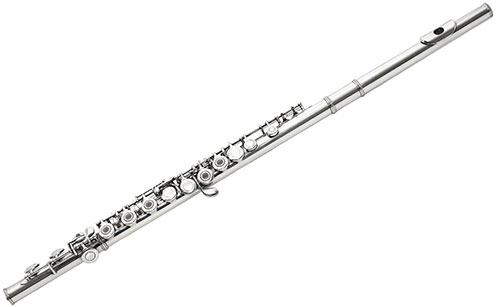

Next is the oboe.

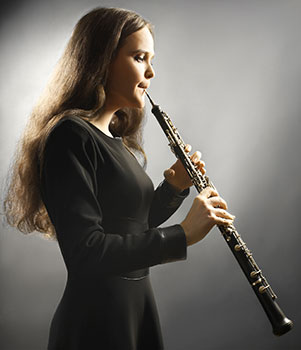
Then we have the clarinet as the next member of the woodwind family.

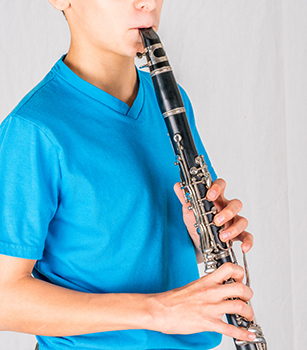
Finally, the bassoon.

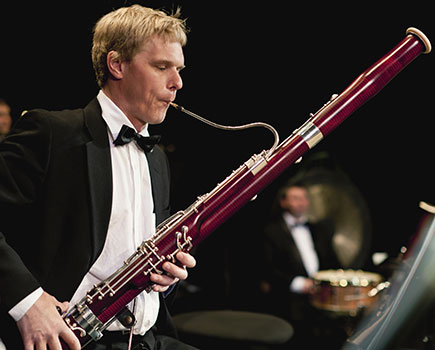
Watch the video FM Symphony Orchestra Young People's Concert: Introduction to the Woodwind Family (3:32) which showcases the woodwind family in action. PBS login information.
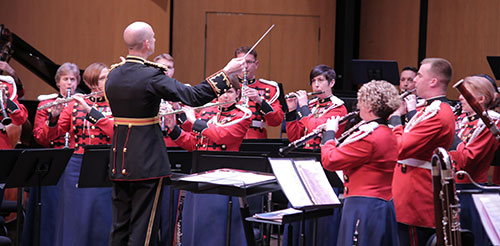
Conductor Gerard Schwarz conducting the United States Marine Band. U.S. Marine Corps photo by Gunnery Sgt. Rachel Ghadiali. Image has been released into the public domain.

The Brass Family
The brass family got their name because all of the instruments are made from brass or metal. They are typically the loudest of all the instruments. Musicians make a sound in brass family instruments by blowing air into them. However, unlike a woodwind instrument, they don't use a reed. The musicians have to vibrate or buzz their lips inside the mouthpiece.
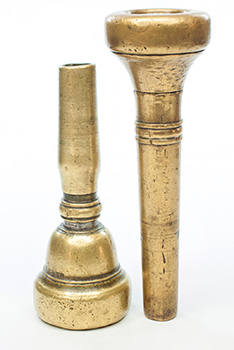
The mouthpiece of a brass intrument
The brass family consists of the following instruments:
- Trumpet
- French Horn
- Trombone
- Tuba

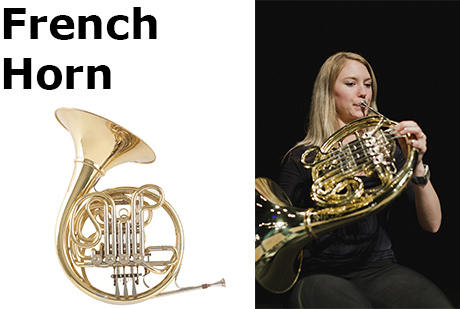
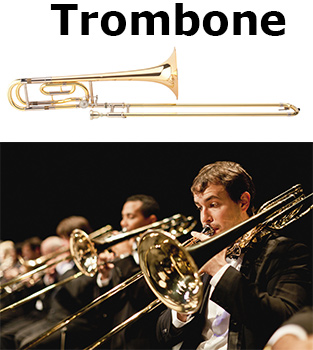
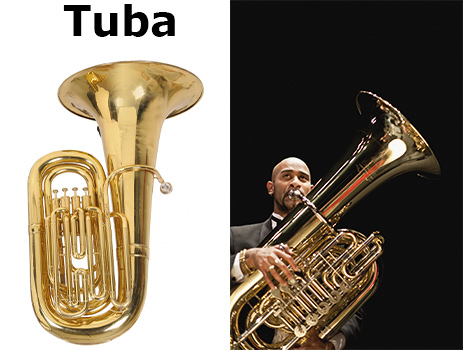
Watch the video FM Symphony Orchestra Young People's Concert: Introduction to the Brass Family (1:50) which showcases the brass family in action.
Open FM Symphony Orchestra Young People's Concert: Introduction to the Brass Family in a new tab

The Percussion Family
The percussion family could be the largest family in the orchestra due to the large number of instruments in it. Percussion instruments include any instrument that makes a sound when hit, scraped, or shaken.
Some percussion instruments are tuned to musical pitches (notes) like the timpani and xylophone. Other percussion instruments are non-pitched non-pitched means it does not have a definite musical pitch like the bass drum, cymbals, and snare drum.
While there are hundreds of different percussion instruments, the most common are the following:
- Snare Drum
- Bass Drum
- Xylophone
- Timpani
- Cymbals
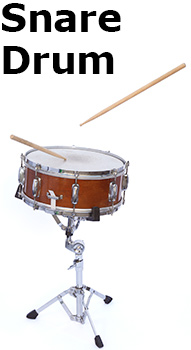

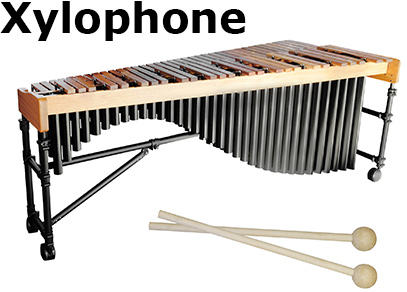
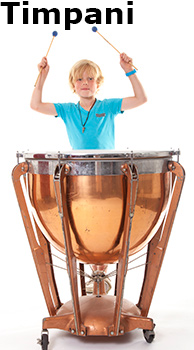

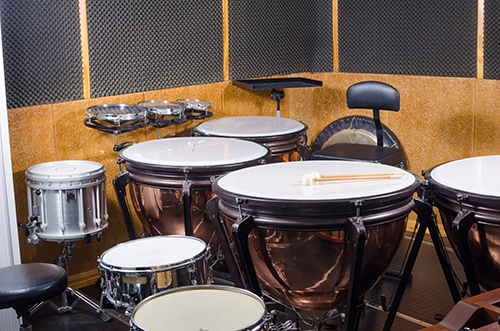
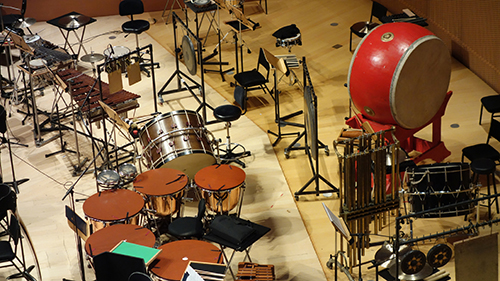
Orchestral percussion
Watch the video FM Symphony Orchestra Young People's Concert: Introduction the Percussion (1:37) to see the percussion family in action.
Open FM Symphony Orchestra Young People's Concert: Introduction the Percussion in a new tab

The Vocal Family
The vocal family includes the most common musical instrument on earth -- the human voice! Most everyone already has this instrument. The musical voice is created by singing pitches instead of talking.

The Mechanics of Singing
Let's review the components of singing! As you read through the steps, take a look at the diagrams below.
- Singing is created when a breath starts at the diaphragm muscle below the lungs and travels upward.
- The air flows over the vocal cords, which are inside the larynx.
- From the vocal cords, the air travels into cavities in the throat and behind the nose called resonance spaces. These spaces cause the sound to vibrate and create each person's individual vocal sound.
- The final aspect is the articulation or shaping of the sound which is done by the throat, tongue, and lips.
All of these components combine to form what we call singing!

See larger version of the larynx diagram here.

Notice how air flow interacts with the vocal folds, or vocal cords. Open larger version of the vocal cords diagram here.
Vocal Range
Vocal range is the total span of musical pitches that a singer can produce. The vocal range can be classified in between the highest and lowest pitches that a human can produce.
The common vocal ranges for the human voice from highest to lowest are:
- Soprano (the highest)
- Mezzo-Soprano
- Alto
- Tenor
- Baritone
- Bass (the lowest)

Watch the video Mozart's Choral Music (7:44) below to hear the different vocal ranges in action. Two pieces by Wolfgang Amadeus Mozart are featured in the video below. "Veni Sancte Spiritus" was written in 1768 when Mozart was just 12 years old. The other piece, "Ave verum corpus," was written in 1791. The words the choir sings in both pieces are in Latin and are hymns and liturgies from the 11th century and 14th century, respectively. Mozart wrote a new musical setting for each. See if you can identify the different vocal ranges singing different parts.
Open The Classical Period: Mozart's Choral Music | Music Arts Toolkit in a new tab

